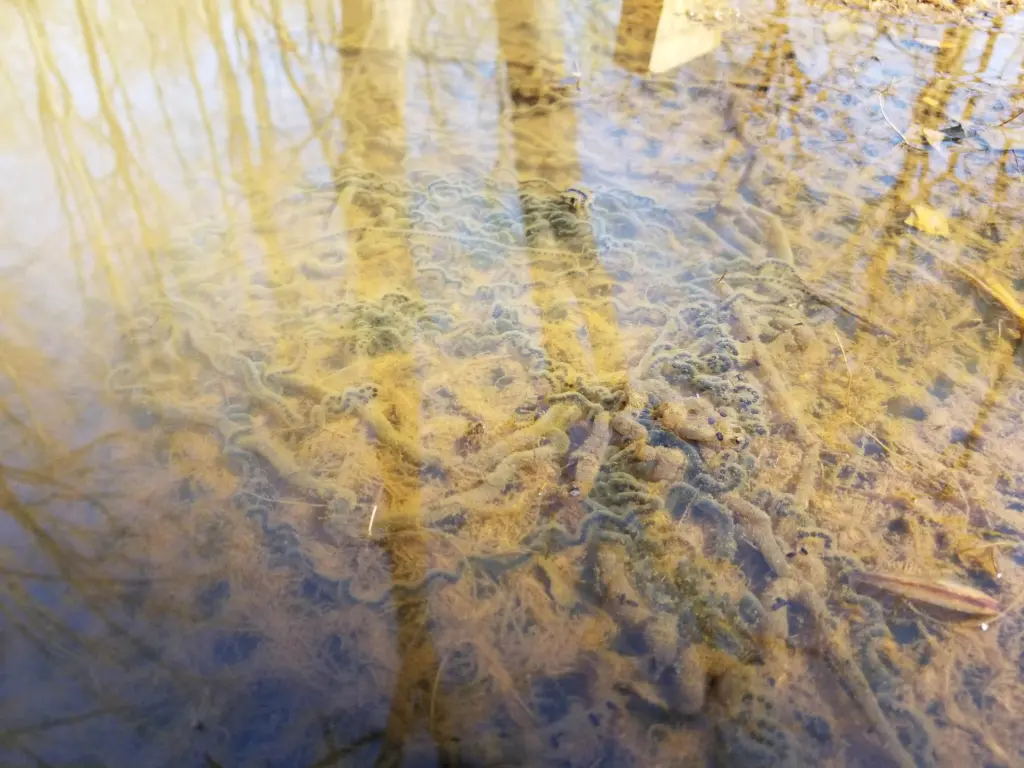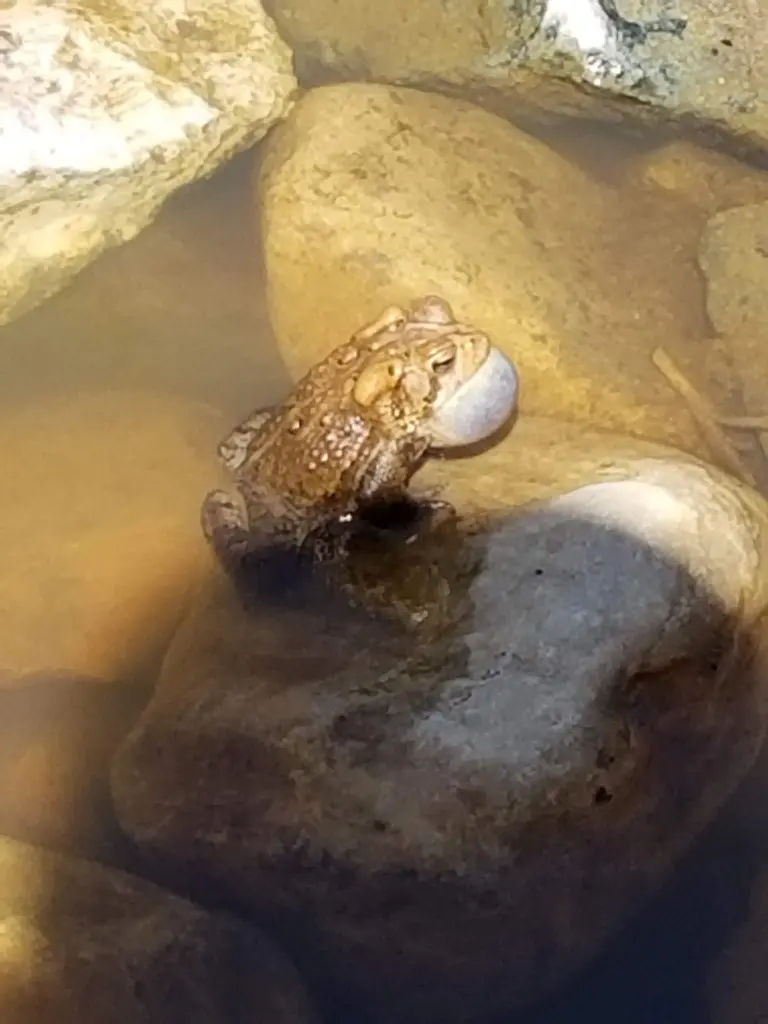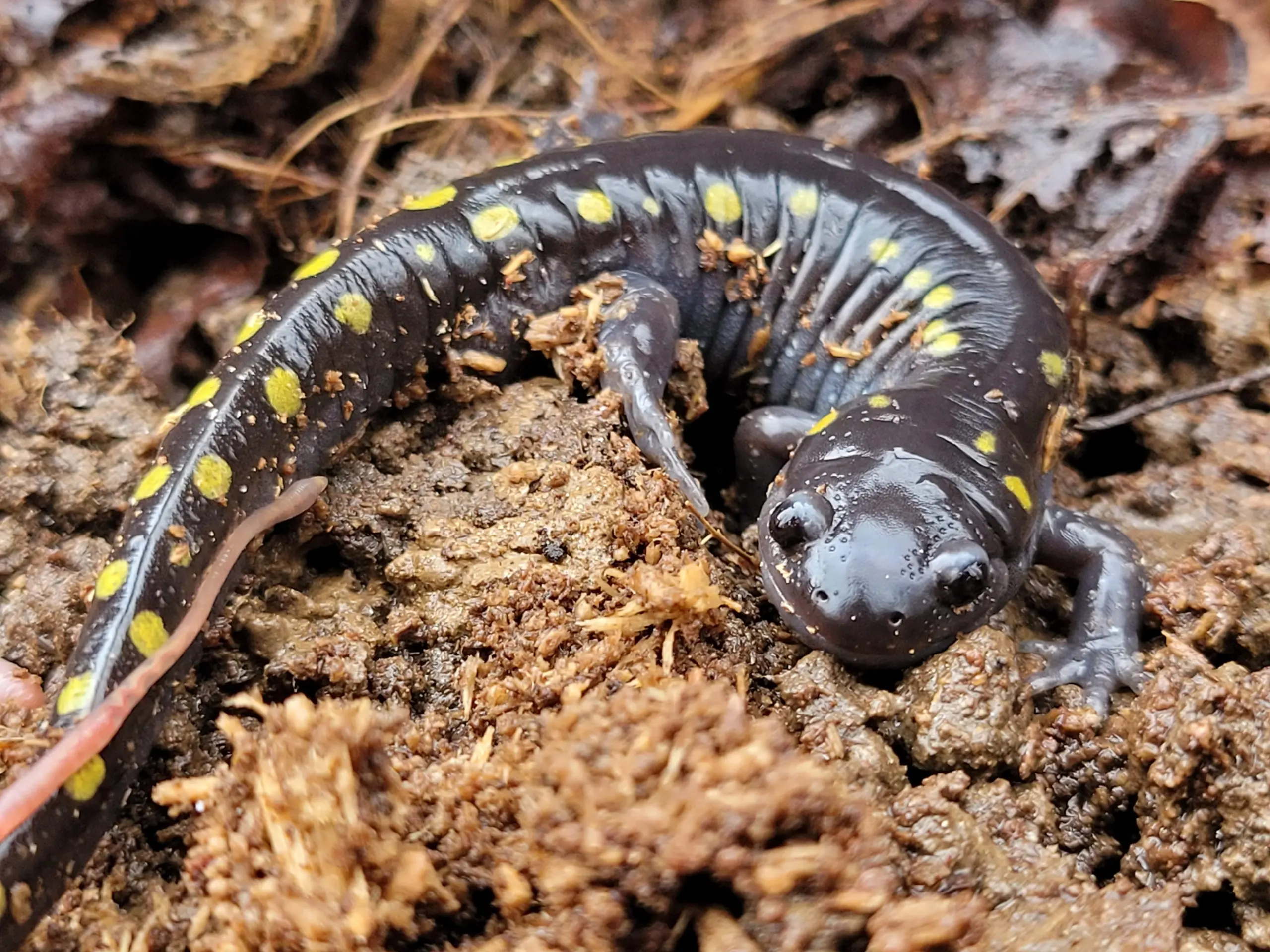Grace Dho
As we enter springtime and warmer weather, one can find natural clues all around us that the seasons are changing. At Woodend, some of the first signs of spring can be found in and along our restored streams. We begin to hear the chorus of spring peepers on late February evenings, see the masses of amphibian eggs in March and April, and listen to the croaking of bullfrogs throughout the day in May. Our restored stream has helped Woodend become an oasis for springtime wildlife and wildflowers.

Though our step pools may be small, they are teeming with lots of little lives. We have more frogs, toads, salamanders, and macroinvertebrates living in the forest post-restoration compared to when our stream was degraded and nearly empty. The number and identity of these critters can tell us a lot, so learning more about them can key us into the health of our stream. Teams of dedicated Master Naturalist volunteers monitor Woodend’s restored stream, cataloging changes through data collection. Monitoring who lives in our stream can help us determine the quality of our water. Certain organisms will only reside in a stream if the water quality is just right. These species are known as “indicator” species, meaning their presences help provide insight into stream health. At Woodend, amphibians and macroinvertebrates act as indicators of Woodend’s stream health. Having a higher diversity of these creatures can help us track how our stream is responding to the recent restoration project.
Macroinvertebrates are one of the most diverse groups we can monitor. Macroinvertebrates refer to any animal without a backbone that is large enough to be seen with the naked eye. Woodend’s macroinvertebrate team specifically monitors aquatic macroinvertebrates, which are often larval and nymphal forms of terrestrial adults. Even though these creatures are supposed to be seen with the naked eye, they are still quite small. Macroinvertebrate volunteers scoop water out of our step-pools and place the contents in a shallow dish. Volunteers will sift through the contents, looking for small creatures, and identifying those creatures down to the family level. In 2023, 16 different families were found across Woodend’s pond and stream. The most common families were Lumbriculidae and Physidae, which represent aquatic worms and pouch snails.

Our next team of stream monitors likes to watch from a distance. The visual herp monitoring team counts amphibian species that can be seen from the edge of the pools. This includes egg masses, tadpoles, juvenile salamanders, adult frogs, and adult salamanders. This process helps us assess the amphibian diversity at Woodend, and track their breeding habits. Breeding amphibians like to lay their eggs in small pools of water, so the step-pools at Woodend are perfect for them. Last year, our team spotted 7 spotted salamander eggs and 99 adult frogs. The most common type of adult frog was the northern green frog, while the rarest was the pickerel frog. No adult spotted salamanders were spotted during the survey, but their egg masses show that they approve of our habitat. Salamanders begin their lives in pools, but they become more terrestrial species as adults. Adults will return to the pools in the early spring for mating, so we are hoping to see more eggs this spring.
Finally, some teams don’t even need to see critters! Our FrogWatch team tracks the frog species present at Woodend by identifying their calls. Volunteers will wait outside at night with the hopes of hearing frog croaks, as each species of frog has a unique call. The volunteers will track what frog species they heard, and how intense the call was on a scale of 1 to 5. Not only is this data used by Nature Forward, but we also participate in the national FrogWatch project, which collects frog call data from all over the country. This past year, six unique frog species were heard. Our most commonly calling frogs were the gray tree frog, green frog, and spring pepper. The average calling intensity across all species was 1.5, and the American toad had the highest average calling intensity with a 3.
As March begins, our stream monitoring teams are springing back into action, and these teams will be on the hunt for these stream critters till August. If you would like to join our team of stream monitors, please email Bradley Simpson at [email protected]. However, everyone, regardless of team, is welcome to come and explore the step pools at Woodend this spring.

